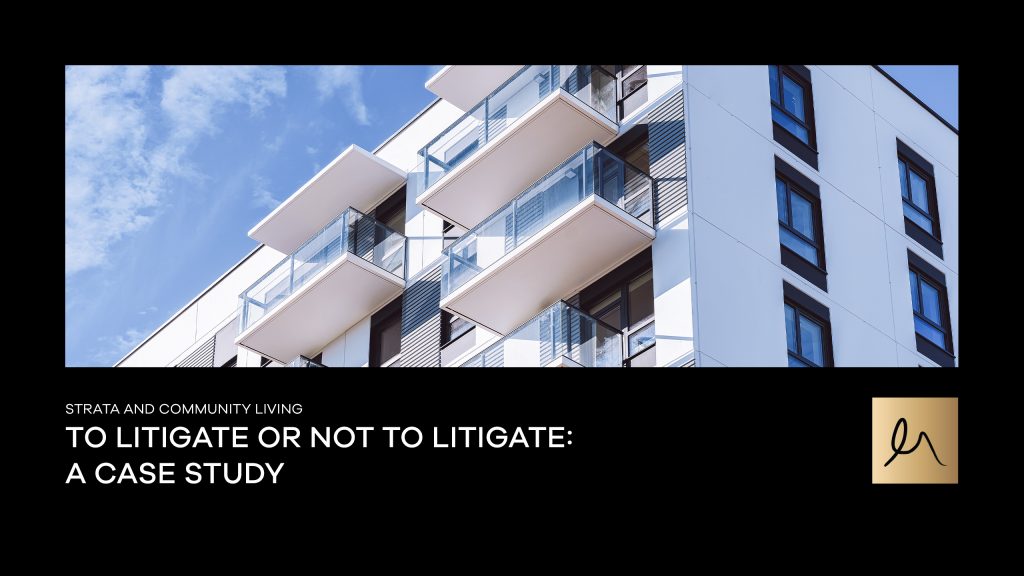“How can we resolve our dispute without ongoing and expensive litigation?
The Madison Marcus strata defects and dispute resolution team is dedicated to achieving cost-effective solutions for our clients and resolving disputes where possible before a final hearing.
Most recently, we were approached by an owner’s corporation comprising 28 units that were approaching the limitation period for a claim for major defects under the statutory warranties contained in the Home Building Act (HBA). Prior to seeking our assistance, the owner corporation was in the process of negotiating an agreement with the builder to come back and rectify some of the defects. The problem was that there was no agreement to rectify all the defects recorded in the owner’s corporation’s defects report, nor was there an agreed scope of works or certification process considered.
The builder was anxious for the owner’s corporation to reach an agreement without commencing legal proceedings.
When approached by the strata committee and strata manager for some advice and guidance, we advised them that it was primarily important to preserve the rights to the statutory warranties imposed in the HBA. We explained that the most efficient way of ensuring that a resolution could be reached whilst still preserving the statutory warranties, as the quantum of their claim was unknown, was to commence proceedings in the NSW Civil and Administrative Tribunal (NCAT) and continue negotiating with the builder.
In this scenario, the builder has already been provided with the report that the owner’s corporation was relying upon, and the builder had identified the defects that they agreed to rectify. However, many defects remained in dispute. After the NCAT proceedings were commenced, the builder became hesitant to commit to anything that they had not previously agreed were defects that they were liable for. The owners corporation, in turn, wanted all defects in their reports to be rectified, which placed negotiations in a stalemate.
As the builder was not legally represented at the time, and in order to not be antagonistic, we encouraged the owner’s corporation and strata manager to explain to the builder that the only reason the NCAT proceedings were commenced was to protect their rights under the HBA and they were still willing to try to negotiate a resolution to their dispute. The builder, in turn, engaged their own lawyers, which allowed us to negotiate directly with the builder’s representatives.
Appreciating the owner corporation’s request to resolve the dispute and have the defects attended to expeditiously, we approached the builder‘s solicitors and proposed that the parties enter into a Deed of Settlement in which there was a record of the defects agreed to rectify as well as those defects that they disputed they were liable for. We recommended that those disputed defects should be tabled as defects requiring further investigations and be the subject of an expert determination. This, in turn, minimised the costs for each party to engage experts to prepare additional reports, attend a conclave, and, if no agreement was reached, attend a final Hearing.
Our intention was to ensure that costs for all parties were significantly reduced and that the parties would resolve their dispute outside of ongoing litigation. Ultimately, the terms of a Deed of Settlement were agreed upon and entered, following which the NCAT proceedings were withdrawn. Although we appreciate that such results cannot always be achieved, Madison Marcus remains committed to resolving building defects disputes expeditiously and commercially, no matter who we act for.
Whether we are acting for builders, developers or owners corporations, we understand that the best way to resolve a dispute is to help our clients understand that achieving a commercial and expeditious resolution should be their desired outcome.







